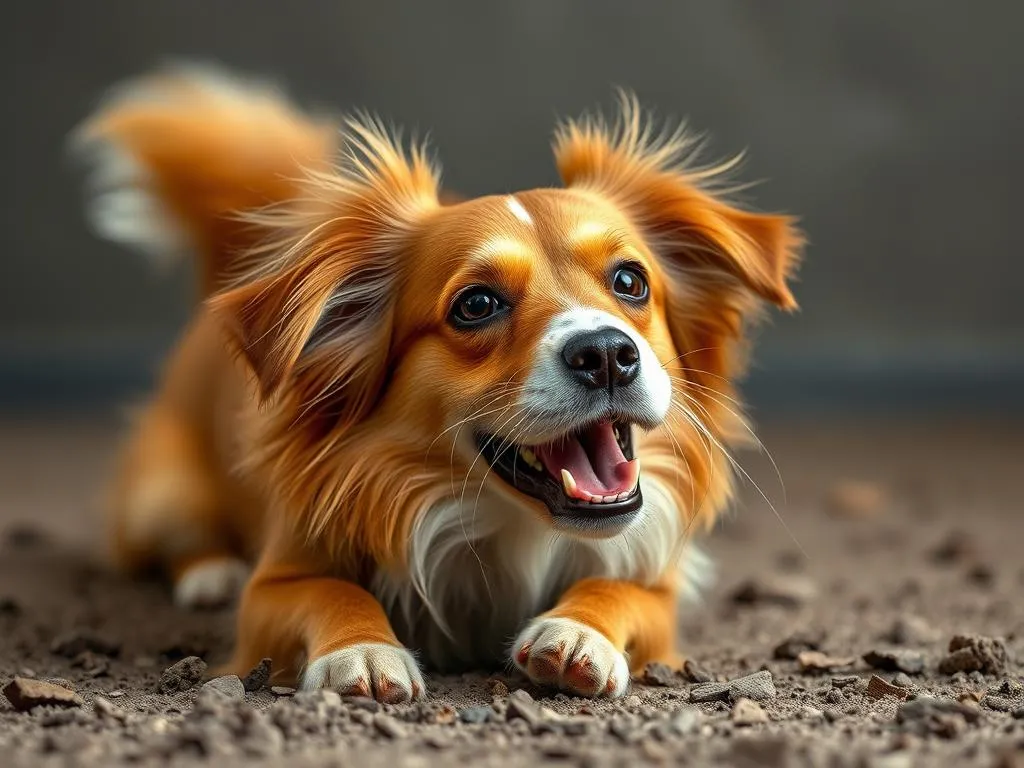
Introduction
Training your dog is fundamental to nurturing a well-behaved and happy companion. One of the most delightful tricks you can teach your dog is the spin command. Not only is it a crowd-pleaser, but it also serves as a fantastic bonding experience while providing your dog with mental stimulation and physical exercise. In this guide, we will explore the ins and outs of how to teach your dog to spin, covering everything from understanding your dog’s behavior to troubleshooting common training issues.
Understanding Your Dog’s Behavior
The Importance of Positive Reinforcement
When it comes to dog training, positive reinforcement is the cornerstone of effective learning. This method involves rewarding your dog for desired behaviors, which encourages them to repeat those actions. For instance, when teaching your dog to spin, using treats, praise, or playtime as a reward can motivate them to engage with the training process. By providing a positive experience, you not only facilitate learning but also strengthen your bond with your furry friend.
Recognizing Your Dog’s Learning Style
Every dog is unique, and understanding their individual learning style can greatly enhance your training approach. Dogs can be classified into three main learning styles: visual, auditory, and kinesthetic.
- Visual learners respond well to gestures and movements.
- Auditory learners are more attuned to verbal commands and tones.
- Kinesthetic learners thrive on physical interaction and hands-on experiences.
Take some time to observe how your dog reacts to various cues. This understanding will enable you to tailor your training techniques to suit their style, making the process smoother and more enjoyable.
Preparing for Training
Choosing the Right Environment
The environment where you choose to train your dog plays a critical role in their ability to focus and learn. Select a distraction-free space where your dog can concentrate without interruptions. This could be a quiet room indoors or a peaceful outdoor area. Ensure that the space is safe and comfortable for your dog, allowing them to feel at ease during training.
Gathering Training Supplies
Before diving into training, it’s essential to gather the necessary supplies:
- High-value treats: Choose small, soft treats that your dog finds irresistible.
- Clicker (optional): A clicker can help mark desired behaviors quickly.
- Leash: A leash can help maintain control, especially in the beginning.
Selecting the right treats is crucial; they should be something your dog truly loves. This will enhance their motivation and eagerness to learn.
Setting Realistic Goals
Training takes time and patience. It’s important to set realistic goals and have a clear timeline for teaching the spin trick. Most dogs can learn this trick within a couple of weeks if training sessions are consistent and enjoyable. Remember that every dog is different, so be prepared to adapt your expectations based on your dog’s progress.
Step-by-Step Guide to Teaching Spin
Teaching the Basic Spin Command
To begin teaching your dog to spin, start with the basics. Here’s a step-by-step approach:
- Get your dog’s attention: Use a treat to lure your dog into a standing position.
- Lure with the treat: Hold the treat close to your dog’s nose, then slowly move it in a circular motion around their body.
- Encourage the spin: As your dog follows the treat, they should naturally start to turn in a circle. If they do, praise and reward them immediately.
Incorporating the Command “Spin”
Once your dog grasps the basic movement, it’s time to introduce the verbal cue.
- Choose the command: Use a simple word like “spin” or “twirl.”
- Timing is key: Say the command just as your dog begins to turn.
- Reinforce with rewards: Immediately reward them when they successfully complete the spin.
Adding Hand Signals
Incorporating hand signals can enhance your dog’s understanding of the command.
- Choose a signal: Use a specific hand gesture, like a circular motion with your hand.
- Consistency is crucial: Always use the same gesture for the spin command to avoid confusion.
- Practice together: Combine the verbal and hand signals as you continue training.
Practicing and Reinforcing the Trick
Practice makes perfect! Aim for short training sessions of about 5-10 minutes, 2-3 times a day. This prevents fatigue and keeps your dog engaged.
- Reinforce success: Always reward your dog with treats and praise when they successfully perform the spin.
- Be patient: If your dog struggles, take a step back and simplify the command.
Troubleshooting Common Issues
Dog Not Responding to the Cue
It can be frustrating if your dog seems unresponsive to the spin command.
- Identify distractions: Look for external factors that may be distracting your dog, such as noise or other pets.
- Regain focus: Try training in a quieter environment or use a leash to maintain control.
- Shorten sessions: If your dog loses interest, consider shortening your training sessions or varying the location.
Dog Getting Dizzy or Uncomfortable
While many dogs enjoy the spin trick, some may become dizzy or uncomfortable.
- Watch for signs: If your dog shows signs of distress, such as stumbling or stopping suddenly, it’s essential to pause the training.
- Alter the approach: If spinning is problematic, consider teaching them to turn in a more gradual manner or try a different trick that they enjoy.
Maintaining Consistency
Consistency is key to successful training.
- Practice regularly: Integrate the spin command into daily routines, making it a fun part of playtime.
- Reinforce positive behavior: Continue to use rewards and praise to reinforce the spin command, even as your dog becomes more proficient.
Expanding on the Spin Trick
Adding Variations
Once your dog masters the basic spin, consider introducing variations to keep the training exciting.
- Double spin: Teach your dog to spin in the opposite direction or to spin twice in a row.
- Speed variations: Encourage your dog to spin faster or slower based on your cues.
These variations not only challenge your dog but also keep their mind engaged and active.
Incorporating Spin into Other Tricks
The spin trick can seamlessly blend into a series of other commands.
- Combine commands: Teach your dog to spin after sitting or staying.
- Create a routine: Develop a sequence of tricks that includes the spin to showcase your dog’s skills.
This not only provides mental stimulation but also enhances your dog’s overall training experience.
Final Thoughts
Celebrating Your Dog’s Progress
As your dog learns and improves, it’s vital to celebrate their milestones.
- Use varied rewards: Beyond treats, consider giving your dog a new toy or extra playtime.
- Acknowledge achievements: Praise your dog enthusiastically when they successfully perform the spin or any related tricks.
Continuing the Training Journey
Training is a continuous journey. Once your dog has mastered the spin, consider exploring more advanced tricks.
- Advanced tricks: Look into teaching your dog other fun tricks like roll over, play dead, or even agility training.
- Seek resources: Books, videos, and local training classes can provide additional insights and techniques to enhance your training repertoire.
Conclusion
Teaching your dog to spin is not only a fun trick but also a wonderful way to bond and engage your pet. With patience, consistency, and a positive approach, you can successfully guide your dog through this enjoyable learning process. Remember to celebrate every achievement, no matter how small, and continue exploring the exciting world of dog training. We hope this guide has inspired you to embark on this rewarding journey with your furry friend. Feel free to share your experiences or ask questions in the comments!









